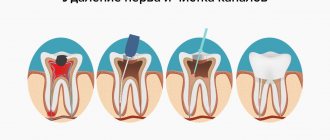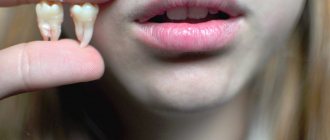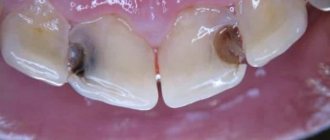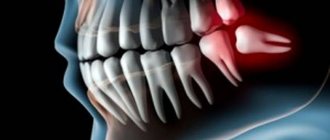As a rule, toothache occurs unexpectedly. Such a nuisance always takes a person by surprise, and if it is not possible to get to the dentist, then the pain becomes simply unbearable. People quite often use garlic for toothache. Of course, in this case, you must visit the dentist, but until the visit, you can use this particular product to relieve the pain.
Useful properties of garlic and effect
This product contains many different components that have a positive effect on the functioning of cells in the human body, the functioning of internal organs, as well as the functioning of many systems. In its pure form or together with other products, garlic is consumed by humans orally. In addition, it can also be used externally.
The use of this product, as well as various herbal medicines made from garlic, allows you to maintain antiseptic, antiparasitic, and antibacterial effects. In addition, garlic helps reduce the risk of various infectious processes, as well as reduce the likelihood of the spread of pathogenic bacteria throughout the human body. Garlic for toothache is effective because it destroys germs.
When consuming products that contain phytoncides with the highest level of biological activity, the efficiency of the immune system in the body increases. If you chop garlic cloves, a unique substance called allicin begins to be released from the pulp. Thanks to it, a certain therapeutic effect is created. To get any results when using garlic for toothache, it must first be crushed.
The benefits of garlic in the fight against tooth pain
If we try to understand the chemical composition of a simple clove of garlic and look among the substances in it for those that can relieve pain, we will not find any analgesics, even weak ones. Therefore, you should not expect that immediately applying garlic to a sore tooth will have approximately the same effect as pharmaceutical painkillers.
But the antiseptic properties of garlic are really pronounced, and are due to the substance allicin, which exhibits bactericidal and fungicidal effects.
This is interesting
Allicin is not present in garlic in free form, but is formed only during mechanical destruction of clove cells, when the contents of damaged vacuoles and cytoplasm mix with each other and enter into a chemical interaction.
Thus, the “pain-relieving” properties of garlic are very, very limited, and can only manifest themselves in the sense that its bactericidal properties will reduce the number of pathogenic microorganisms that cause, for example, gum inflammation.
It should be borne in mind that allicin is a very aggressive compound, as a result of which garlic can, for example, cause burns to the oral mucosa with direct prolonged contact, as well as lead to additional irritation of the pulp (dental “nerve”) if there is a deep carious cavity in the tooth.
Examples:
- Suppose there is a deep carious cavity in the tooth, almost reaching the pulp chamber (here is the neurovascular bundle, which is colloquially referred to simply as the dental nerve). If the pulp is still alive (that is, it has not undergone death and necrotic decay), then when chemical irritants, for example, sour, spicy, salty foods, enter such a carious cavity, severe pain often occurs. So if you try to follow the advice of traditional “healers” and compact a piece of garlic into the “hollow”, then an unforgettable experience will be immediately guaranteed. Immediate rinsing with water will help.
- There are situations when pain occurs due to inflammation of the gum tissue - food debris gets into the so-called gum pocket, and here the process of rotting begins. In an effort to destroy bacteria at the site of inflammation, some people also try to apply a piece of garlic to the sore spot, and at the same time diligently endure terrible pain and burning, believing that these are natural costs of the healing process. Well, the damage from a burn can be no less than from inflammation, and bacteria can be destroyed in much more rational and safe ways.
The use of folk recipes
If you have a toothache, you should definitely visit a qualified specialist. Toothache indicates that some serious inflammatory process is occurring inside. It is likely that such a process occurs with some complications. If you ignore such a condition, then consequences will inevitably appear, which in some cases are even life-threatening for the patient. If for some reason it is not possible to visit the dentist, then first aid should be provided as soon as possible. And in this case, garlic will help against toothache.
This product has been an excellent antiseptic since the times of our ancestors. But does garlic help with toothache? Answering this question, it is worth noting once again that garlic contains allicin, which has an anesthetic and antibacterial effect. However, most of this substance is contained in the sap of the plant. It is for this reason that garlic relieves toothache in humans. Therefore, it is worth considering several effective folk recipes to relieve the painful condition.
Garlic almighty
Garlic has long been credited with magical properties. Our ancestors believed that the pungent smell of this garden crop repels and drives out evil spirits. It was believed that the cause of illness or pain was a demon embedded in a person, and if you rub garlic paste on a sore spot or eat a clove or two, the pain would subside and the illness would go away.
Nowadays, when the nature of diseases is known to both doctors and ordinary people, no one drives out evil spirits, but garlic is still widely used in folk medicine. It has high antiseptic properties, fights infection, is also a good parasitic agent and a strong anesthetic.
The analgesic effect is due to the fact that garlic kills microbes and reduces the number of pathogenic organisms that cause painful processes and inflammation.
It will not relieve pain the way analgesics do, but due to its bactericidal properties it will have an analgesic effect for some time.
We suggest you read: Can an insect get into your ear?
Preparation of the gruel
If the pain is severe and unbearable, then to eliminate it you need to prepare a paste from one garlic clove. You also need to add a small amount of salt. Grind the ingredients thoroughly and stir, then place a small amount of this paste on the sore tooth. In such a situation, you should not be too zealous, otherwise a slight burning sensation may form. You can also apply garlic on your wrist for toothache. This way the product acts on the pain through the pulse, due to which the toothache gradually goes away.
Using clove pulp
A paste prepared from crushed garlic is used more often than just cloves in the fight against toothache. Additional components somewhat soften the burning effect of garlic, without depriving it of its bactericidal and anesthetic properties. Let's consider several options for preparing and using such a slurry.
Garlic and onion application on tooth
Grind the garlic and onions using a grater.
Take grated vegetables and table salt in equal proportions and mix until smooth. Apply the resulting mixture to the aching tooth, apply a cotton swab on top, and bite. Hold for no more than 15 minutes; if you feel a strong burning sensation, remove the compress and rinse your mouth with warm water.
You can also wrap a little pulp in gauze and apply it to the gum near the sore tooth. Keep for 10-15 minutes, remove if there is a strong burning sensation, and also rinse your mouth with warm water.
Oil based recipe
Mix grated or crushed garlic in a mortar with vegetable oil (peanut oil is best, but you can also use olive, sunflower or corn oil). This component envelops the tissues of the oral cavity, protecting against possible burns.
The resulting homogeneous mass is either applied to the diseased tooth or applied to the gums in the form of a gauze compress. Despite the protective properties of the oil, garlic can still cause a burn to the gums, so if you feel a strong burning sensation, you must empty your mouth of the garlic-oil mass and complete the procedure with a warm rinse.
Bread based
An alternative to butter to soften the effect of garlic is to use rye bread. To do this, you need to soak the piece until it becomes a paste, add chopped garlic and mix until smooth.
Use in the same way as the previous options. Complete the procedure by rinsing with warm salted water.
A popular and controversial method is to use your wrist.
A somewhat unusual and, at first glance, strange way to relieve toothache with garlic - applying crushed pulp in a clean
view on the wrist from the side opposite the diseased tooth. That is, if it hurts on the right, you need to treat the wrist on the left, if it hurts on the left, the wrist on the right. Read also: Antibiotics in dentistry
The prepared pulp should be applied to the hand and bandaged tightly. Our ancestors claimed that this method relieves toothache. Some contemporaries consider this method to be an analogue of acupuncture and acupuncture, but there is no scientific evidence of such an analogy.
Skeptics tend to think that the essence of this method is to shift the focus: burning and pain in the wrist distract from the toothache and concentration on it. After 15-20 minutes, you need to remove the compress, wash your hand with warm water and soap, and treat with cream.
Garlic, onion and salt
To overcome this unpleasant symptom at home, garlic for toothache can be combined with onion and salt. It is necessary to take the plants in equal quantities, chop them thoroughly, add a small pinch of salt, and then mix everything until a homogeneous paste is obtained. A small amount of the prepared mixture should be placed in the place where there is caries on the tooth.
However, it should be noted that the tooth must first be cleaned and a piece of cotton wool placed on top of the pulp. Thanks to this, the gums will be protected from possible burns that can form under the influence of garlic and onion juice. Salt, as a rule, helps to remove various pathogenic bacteria. This is how the human body is enriched with strong phytoncides. Thus, without any medications, garlic at home will relieve any person from toothache.
Garlic compress on the wrist
At first it may seem that applying garlic to the wrist for a toothache is something completely meaningless, a kind of “grandmother’s” method at the level of spells and prayers. It is also called Siberian, and it looks like this: a clove of garlic is crushed until a paste is obtained (sometimes they simply cut off half), which is then applied to the inside of the wrist, where the pulse is felt, and carefully pressed with a thick bandage. Moreover, if the tooth hurts on the right, then it is recommended to apply the bandage to the left hand, and vice versa.
Apologists for this method of relieving toothache appeal to the connection of various points on the surface of the body with nerve nodes, and believe that by treating such a point on the wrist with garlic, you can stop the flow of pain impulses to the brain. This justification has no evidence base, and this technique is used today only in villages, for lack of more effective painkillers.
It is also useful to read: What can be done at home to relieve severe toothache
Meanwhile, less odious comrades formulated a different principle of how garlic works when applied to the wrist: a strong burning sensation of the skin on the hand distracts a person from a sore tooth, as a result of which the toothache no longer seems so unbearable. Well, the approach is ambiguous, and here it is up to the person to decide what is best for him: either only one tooth hurts, or the tooth and wrist hurt at the same time...
Review
“Once it happened that a tooth suddenly ached, and it was Saturday, fifty kilometers to the regional center. That is, I will see a doctor only in two days by lunchtime. I went to a local grandmother-herbalist to help at least with something. She tied a cut clove of garlic to my wrist and bandaged it so tightly that I started to press it. She said that if I feel a strong burning sensation, then everything is fine, the process is progressing. I was also surprised that the tooth hurt on the left, and she tied the garlic on the right. My hand burned mercilessly, but I endured it as best I could, and I was already sweating. Then, after all, I couldn’t stand it, I removed the bandage, the skin underneath was red, like a cancer. The tooth didn’t go away, but while my hand was burning, I didn’t notice it that much...”
Olga, Khabarovsk
Rye bread and garlic
A very effective remedy is rye bread and garlic for toothache. This recipe won mostly positive reviews. To do this, you need to soak the bread in water to get a homogeneous paste. After this, add the same amount of chopped garlic. All ingredients must be thoroughly mixed to obtain a mixture of homogeneous consistency. The prepared pulp is applied to the gum near which the tooth hurts. This compress must be applied for at least 20 minutes, after which the mouth should be rinsed with a mild saline solution. To prepare such a solution, you need to mix one teaspoon of table salt and one glass of plain water.
Proven Recipes
Garlic is used for toothache at home, mainly externally. To do this it:
- cut into slices;
- grind into pulp;
- squeeze out the juice;
- insist;
- combined with auxiliary additives.
This should be done immediately before using the prepared product. Given the aggressive effect on the integument and mucous surfaces, garlic should be used for toothache with caution.
Medicinal compositions are applied in the form of a compress or application and used for rinsing. Garlic is also taken orally as a remedy for toothache, by chewing the cloves or using a tincture. If the garlic mass is placed into the cavity of a carious tooth, the hollow must first be cleared of food particles and purulent secretions. For this purpose, use saline or soda solution, herbal decoctions or simply boiled water.
The most common first aid method for tooth pain is a garlic compress. To prepare it, it is enough to squeeze out a previously cleaned clove, grate it on a fine grater or grind it in another way. The resulting pulp is applied to a piece of gauze, which is then rolled up and applied to the sore gum. Instead of a compress, you can use an application. A peeled clove of garlic should be cut in half lengthwise, lightly pressed to release the healing juice, and applied to the gum for half an hour.
Garlic-onion compress
To eliminate pain in a tooth affected by caries, you can use the following recipe. Combine in equal parts:
- a clove of garlic passed through a chopper;
- onion gruel;
- fine salt.
Onions enhance the effects of the garlic component, and the salt additive improves the discharge of purulent filling and helps eliminate swelling.
The medicinal composition is placed inside the cleaned tooth and left for some time. If the pain intensifies during the procedure, the cavity should be rinsed immediately.
Compresses for gums are made with the same composition.
Oil based
You can reduce the burning sensation of garlic gruel by adding oil - peanut or any vegetable oil (olive, sunflower, corn, etc.). It will not only make the procedure more comfortable, but will also enhance the anti-inflammatory effect of garlic. As a result, the toothache will subside and the swelling of the gums will decrease. The mixture should be wrapped in gauze and applied to the affected area.
Read also: How to use dental floss
Bread based
Another way to soften the aggressive influence of garlic is to use bread crumb. It must first be soaked in a small volume of water and then mixed with an equal amount of chopped garlic. It is also applied as a compress. Since the aggressiveness of the composition is reduced, its exposure time can be increased.
Grandma's recipe
This method involves using garlic for toothache outside the mouth. It is divided into plates or ground into a paste and applied to the wrist area. There are several nuances here:
- The impact should be applied to the arm opposite to the location of pain.
- You should choose the area where the pulsation is best felt.
- Place a tight bandage over the garlic.
- If the skin is too sensitive, the composition is placed on top of a gauze layer.
You need to stock up on this product in advance, because it takes about two weeks to prepare. Garlic cloves should be poured with vodka in a ratio of 1:5, seal tightly and put in a dark place. After infusion, the liquid is filtered and used as a rinse, diluted by half with water. But the use of this composition is not always appropriate. It can cause excessive vasodilation, which will lead to increased inflammation in the tissues. So it should be used with caution, avoiding possible abuse.
Garlic in a bandage
In some cases, when a toothache occurs, take 2 cloves of garlic. They must be thoroughly chopped with a sharp knife to form small grains. The resulting pulp must be placed on a bandage, which should be folded several times. Next, apply garlic in a bandage for toothache on the wrist. Reviews say that after an hour of such a compress, the painful sensations begin to recede. Instead of a bandage, you can also use regular gauze. It is important to note that garlic for toothache on the wrist should be applied exactly to the place where the pulse is felt.
Considering folk recipes that are used to treat toothache, it should be noted that garlic can also be simply chewed. This product is able to strengthen the human immune system well if the gums and teeth are weak. At the same time, garlic reduces pain, inflammation, and is also effective in fighting various infections. Therapy for toothache is carried out not only due to the reflex effect of this product on pain points. It can also enter the human body through the skin. Therefore, it is important to know where to apply garlic for toothache.
Will garlic help cope with unbearable toothache or not?
Each of us knows firsthand what toothache is.
An extremely unpleasant sensation that prevents you from eating, sleeping, working, or enjoying your vacation. The most correct and reasonable decision in such a situation is to visit the dentist. But what to do if a toothache takes you by surprise during a vacation, a hike, a trip, or at a time of day when dental offices are closed? Pharmaceutical drugs come to the rescue, and in case of their absence, “grandmother’s remedies”, in particular, one of the most effective - garlic. How is this plant used? Does garlic really help get rid of toothache? What are the advantages, disadvantages and contraindications of using garlic recipes?
There are various methods and recipes based on garlic that help get rid of toothache at home:
- applying a clove to a sore tooth;
- a compress of garlic pulp on a sore tooth;
- rinsing the mouth with garlic tincture;
- taking garlic tincture orally;
- compress on the wrist.
Rinsing is considered the most effective. It not only helps relieve acute pain, but also has a disinfecting effect on the entire oral cavity. Compresses made from gruel or cloves should be used extremely carefully.
People have been using garlic for toothache for a long time. There are several effective recipes for use at home. But does it really help? And is it worth turning to such means in our time?
Any dental problem causes severe pain. And eliminating them in any way is not a guarantee of healing, because the source of infection remains and over time will lead to other serious consequences. Therefore, in any case, it is necessary to consult a doctor as soon as possible.
If you suddenly have a toothache or swollen gums and there is no way to get medical help immediately, folk remedies will help alleviate the condition. One of the most popular is garlic; it is used for toothache in its pure form or as part of various recipes.
Garlic
It is necessary to visit a qualified doctor. After all, toothache indicates that a serious inflammatory process is occurring inside, perhaps even with complications. If this condition is ignored, consequences will certainly arise that can be life-threatening for the patient. But in cases where it is not possible to visit a specialist, first aid must be provided.
Since the time of our ancestors, garlic has been considered a good antiseptic for severe toothache. It contains allicin, a compound that has antibacterial and anesthetic effects. But the juice of the product contains most of this substance.
Traditional recipes:
- Often there are no painkillers at hand. To calm the shooting and twitching pain, you need to bite off a small piece of peeled garlic clove and place it at the site of caries formation. Similar actions help with gum inflammation.
- If the pain is strong, you need to prepare a paste from one clove of garlic and salt. Grind all the components well and place a small amount of the mixture into the cavity of the diseased tooth. Don't be too zealous as it may cause a burning sensation. Or apply a compress to your wrist to control the pain through your pulse.
- In some situations, you can put a whole clove of peeled garlic on the entire tooth. Leave it for 30 minutes, pressing lightly. During this time, juice will flow out of the slice, which will act as a natural soothing anesthesia.
- A mixture of garlic, onion and salt will help cope with unpleasant symptoms. The vegetables are chopped and all components are mixed in equal quantities. Mix well and a small amount of the resulting mixture is placed in the place where caries has formed. The tooth should be cleaned first, and the paste should be covered with a piece of cotton wool. This action will protect your gums from burns. Salt helps reduce inflammation. And the juices secreted by onions and garlic act against pathogenic bacteria, enriching the patient’s body with strong phytoncides.
- Garlic juice with the addition of a small amount of peanut butter will help stop the development of the inflammatory process. Prepare the mixture and apply to the sore tooth.
- Rye bread is used at home for toothache. It must be soaked in water to form a paste. Then add the same amount of chopped garlic. Mix everything well, apply the mixture of uniform consistency to the gum of the diseased tooth. This compress should be applied for 20 minutes, after which the mouth should be rinsed with a weak saline solution. To prepare it you need to mix 1 tbsp. water and 1 tsp. table salt.
- In some situations, 2 cloves of garlic are taken to treat toothache. Grind with a sharp knife to obtain small grains. The medicinal pulp must be placed on a bandage, folded several times and placed on the wrist. After about an hour, the pain will subside.
Important! The compress should be applied to the arm in the place where the pulse is felt.
In addition, it is useful to simply chew garlic. This product helps strengthen the immune system if teeth and gums are weak, it reduces pain, inflammation and works against infection. Treatment of toothache occurs not only due to the reflex effect of garlic on pain points. It is able to penetrate the body through the skin.
Homemade garlic therapy for exacerbations of toothache includes:
- Applying garlic cloves or a compress (prepared from pulp) to the sore tooth. Compresses are not used when the pulp is open, there are signs of inflammatory exacerbations, or deep forms of carious lesions.
- Use of garlic tincture (inside, for rinsing). Rinsing is characterized by the greatest efficiency, producing a disinfecting effect.
- Applying wrist compresses.
- The use of garlic-based recipes is accompanied by an increased risk of burns and damage to the mucous membrane. There is a possibility that as a result of intensive use of the plant juice, the nerve will be destroyed and the pain will go away. This creates the preconditions for blood poisoning and other complications arising from tissue decomposition.
Before starting herbal medicine, which is carried out with the utmost care, you must thoroughly brush your teeth.
The crushed ingredients (proportion – 1:1) are mixed with table salt, applied to the tooth, cotton wool is applied on top (to avoid burns to the mucous membrane), and bitten. The duration of the procedure is up to 15 minutes.
The appearance of unpleasant sensations in the form of a strong burning sensation indicates the need to stop the procedure and then rinse the mouth with warm water.
Alternative use: the resulting pulp is applied to the gums, wrapped in gauze.
Garlic, supplemented with salt, not only produces an analgesic effect, but helps to minimize the risk of purulent tissue inflammation.
Recipe with oil
Chopped garlic is mixed with vegetable oil (you will get a homogeneous consistency), which reduces the risk of burns due to its enveloping effect. The mass is applied to the tooth or applied to the gums in the form of a compress. Peanut oil is considered suitable; corn, olive, and sunflower oil are suitable for the procedure.
The final stage is rinsing with warm water.
Recipe with bread
A piece of rye bread soaked to a mushy consistency is mixed with garlic (chopped) to obtain a homogeneous mass, and applied to the disturbing tooth for a quarter of an hour.
A tightly bandaged garlic compress is applied to the wrist for a quarter of an hour. The side of application is opposite to the diseased tooth. After completing the procedure, the hand should be washed with warm water and soap and treated with cream.
Do you feel nervous before visiting the dentist?
Not really
The method has several hypothetical explanations:
- On the wrist area there are reflex areas involved in the transport of pain impulses to the brain.
- The effect of distraction is triggered: unpleasant skin sensations switch attention, allowing you to forget about the disturbing tooth for a while.
- Phytoncides entering the bloodstream through the skin reach the area of inflammation and produce an antibacterial effect, reducing the intensity of pain.
Tincture
Garlic pulp (100 g) is poured with vodka (500 ml), infused for 14 days in a container with a tight lid in a dark place at room temperature with occasional shaking. The contents are filtered and infused for another two days.
Rinse the mouth with the prepared product (the tincture is first mixed in equal proportions with warm water). In order to relieve intense pain, a compress of gauze, previously soaked in garlic tincture, is applied to the tooth.
Preparation of medicinal tincture based on garlic
To prepare such an anti-inflammatory drug, you will need 100 g of garlic and 500 ml of vodka. The plant must be cleaned and crushed, then pour 500 ml of vodka and send it to a dark place. There the tincture should stand for 15 days at room temperature. The composition must be stirred periodically.
After this time, you need to leave the tincture for another 2 days, then strain thoroughly, using several layers of gauze. If your tooth hurts, this garlic tincture should be diluted with plain warm water. The product is used to treat the entire oral cavity. It is important to note that during such a procedure, special attention should be paid to those areas where the pain is concentrated.
How to strengthen loose and bleeding gums
When strengthening loose gum tissue, you need to use toothbrushes with soft bristles so as not to injure the already weakened mucous membrane. You need to clean the oral cavity thoroughly, but carefully. If pieces of food remain in the interdental crevices, they are removed with dental floss, but not with sharp objects - they injure the tissues and provoke inflammation.
If during the hygiene procedure the gum tissue begins to bleed, you should rinse your mouth with a disinfectant: Chlorhexidine, a solution of potassium permanganate or soda. If your gums do not bleed too much, you can strengthen them with a massage using fir, sea buckthorn or rose essential oil. You need to include more fresh greens in your diet.
Strengthening teeth and gums at home is feasible, but you need to properly organize a therapeutic course, and for this you should definitely consult a dentist.
Possible unpleasant consequences
It is worth noting that when applying garlic to teeth with deep caries, a serious burn to the pulp may occur, after which it may die completely. With this type of burn, very severe pain appears, but the very next day the pulp completely dies, and the tooth stops hurting altogether. However, you should not rejoice at such an occasion by refusing to visit the dentist. As a rule, dead pulp tissue decomposes directly inside the tooth itself, after which purulent masses form there. If the pus does not find a way out, it can present a large number of painful surprises, as well as all sorts of complications. Therefore, even if the pain subsides, it is imperative to visit a specialist and not get carried away with such self-medication.
Important note
When applying garlic composition to teeth with deep carious cavities, it can lead to a serious burn of the pulp with further death. With this type of burn, quite severe pain occurs, but by the next day the pulp will completely die and the tooth will stop hurting completely. But you should not be particularly happy about such pain relief and refuse to visit the dentist.
Since the dead tissue will be subject to decomposition directly inside the tooth cavity with the formation of purulent masses, and not finding a way out, the pus can present a huge number of painful surprises in the form of all kinds of complications. Therefore, even if the pain has subsided, you should definitely go to a specialist and not get carried away with self-medication!
Reviews and recommendations from a specialist
Before you begin self-medicating toothache with garlic at home, it is recommended to read reviews from people who have already used this remedy for short-term relief from unpleasant symptoms. As mentioned earlier, applying garlic pulp to the gum or wrist can cause a burn to the skin or mucous membrane.
Reviews also say that chewing garlic and using vodka tincture have a more mild and short-term effect. In addition, the tincture recipe requires two weeks of infusion, which is inappropriate for acute pain syndrome. Therefore, the tincture must be made in advance so that it is always on hand in case of such unforeseen symptoms. More effective are rinses, which help relieve pain and intoxication symptoms.
Various garlic remedies that enhance the outflow of purulent contents in the dental cavity can improve a person’s well-being for a short amount of time.
One of the disadvantages of homemade garlic remedies in the fight against toothache is the formation of a specific odor. Also, when applying a compress to the pulse, irritation may occur, which will aggravate the problem. If garlic treatment is ineffective, and there is no opportunity to visit a specialist, then you can use other non-drug therapeutic methods:
- Alcohol tincture based on propolis.
- Hydrogen peroxide.
- Infusion of mint leaves.
- Drops of vanilla extract.
- Clove paste, which is obtained by adding water to clove powder.
- Pepper and salt paste.
- Ginger root, which is used for gargling and chewing.
- Applying ice cubes to the cheek.
- Applying a slice of lemon to the tooth.
- Agave leaf compresses.
- Rinses based on warm salt water, soda solution, chamomile infusion and sage.
- Rubbing gums with plantain.
The most effective recipes
It's up to you to decide which method to use. We can only list the most popular of them, specify the number of products, their combination with each other, how much to keep and in what form to take.
- Applying it to the tooth in crushed form - to prepare such a compress, you need to pass the garlic through a garlic press or use a knife. Clean the tooth surface with a brush and paste. Apply the paste to the affected area and cover with cotton wool to prevent irritation of the mucous membranes. By pressing such a compress, the juice is squeezed into the open cavity, due to which the analgesic effect occurs. Some people recommend adding a little salt or pepper to the chopped garlic. They help quickly eliminate swelling of surrounding tissues and increase blood supply. If during such procedures the pain intensifies and discomfort occurs, then the compress must be immediately removed and rinsed with clean water.
- Garlic and onion application - for this, grate the indicated products on a fine grater in equal proportions and add a little salt. Keep this product on the tooth, covered with a cotton swab, for no longer than 15 minutes. If discomfort occurs, you can wrap the pureed ingredients in gauze and hold it on the affected area for a while.
- The use of tincture is a safer method of treatment, sometimes used for preventive purposes. It takes time to cook it. Take 100 grams of the crushed product and immediately pour in 0.5 liters of vodka. The bottle is tightly closed and left in a cool, dark place for two weeks. It is advisable to shake the product every day. After the expiration date, the tincture is filtered through cheesecloth and the residue is allowed to settle. The resulting medicine is diluted with water in the same proportion and used as a gargle to relieve toothache. But in some cases, this remedy can cause another effect - due to the active dilation of blood vessels due to the effects of ethanol and garlic, excessive inflammation of the mucous membrane appears.
- Oil-based product - the same crushed product is mixed with vegetable oil. For medicinal purposes, peanut oil is best suited, but regular sunflower or olive oil, as well as corn oil, will also work. Thanks to this, the burning and irritating effect of garlic is reduced. The finished mass is wrapped in gauze and applied to the diseased tooth. The procedure is completed by rinsing with warm water.
- Compresses on the wrist - for this, choose the place where the pulse is felt most strongly. It is important to choose the opposite hand from the diseased tooth. That is, if it hurts on the right side of the jaw, then the remedy is applied to the left wrist and vice versa. To relieve painful sensations, you need to similarly grind the garlic to a pulp. Place it on your hand and cover it with a piece of gauze, you can bandage it for convenience.
- A recipe based on bread - the pulp is also used to soften the aggressive effects of the product. To do this, it is soaked to a pulp and mixed with squeezed garlic. Apply to the tooth in the same way as previous recipes, and then rinse your mouth with warm water.
Many people who use this remedy experience unpleasant consequences - burning in the mouth, burns of the mucous membranes and excessive irritation of soft tissues. Often the problem does not disappear, but gets worse. Then, to relieve pain, it is better to use pharmaceutical drugs or herbal decoctions. An excellent folk remedy is tincture of oak bark or calendula.
Preventive measures
If, when a toothache occurs, it is not possible to visit the dentist, then you must follow a number of certain rules, thanks to which you can avoid the occurrence of pain. For example, after each meal, you should thoroughly rinse your mouth with plain water. However, it is best to use specialized liquids for this purpose, which are intended for this purpose.
It is also necessary to eat cold and hot foods as little as possible. This is due to the fact that the difference in temperature can cause further tooth decay, as well as pain.
How to strengthen gums with periodontal disease and periodontitis
The main condition for strengthening gum tissue during periodontitis is high-quality daily teeth cleaning. A soft plaque that remains on the enamel for more than two days becomes very dense, hard and turns into tartar, which can no longer be removed with a regular brush. Under hard deposits, the conditions for the proliferation of pathogenic microflora become even more favorable; even with thorough cleaning of the teeth, microorganisms are not eliminated and continue to cause harm to soft tissues and enamel. Therefore, you should remember the following rules for combating periodontitis:
- You should visit the dentist and have your teeth cleaned of tartar and soft deposits. Further hygiene procedures should be thorough and regular - twice a day. After every meal you need to rinse your mouth.
- After brushing your teeth and eating, it is advisable to rinse your mouth with special pharmaceutical products or make homemade herbal decoctions for this.
- If you have loose teeth and for prevention, it is advisable to use special toothpastes that contain strengthening components. When choosing medicinal pastes, it is better to consult your dentist.
Read also: Numbering of teeth in dentistry
It must be remembered that even special strengthening agents cannot cure dental diseases; they can only improve the condition of the gum tissue.
If a tooth is exposed due to periodontal disease, it will not be possible to effectively strengthen the gums at home. First, surgical treatment is carried out, which consists of restoring the dental processes, and only then rinses, special toothpastes and a diet are used to strengthen the soft and bone tissues of the jaw.
To strengthen weak gums with periodontal disease, you can use Troxevasin ointment, which reduces capillary fragility and normalizes blood supply. To strengthen the gums in the presence of periodontal disease and vitamin deficiency, it is better to take vitamins in the form of tablets, since it will not be possible to quickly replenish nutrients with the help of a balanced diet.
conclusions
Toothache is always a signal that the disease is in the process of activity, and it will not get better. Especially if the patient himself sees a deep black cavity in the tooth.
Uncontrolled self-medication is always fraught with aggravation of the situation. Garlic can leave a burn in your mouth, increasing the pain and making it especially unbearable. The use of folk remedies and blind faith in miracles will not help in situations with bad teeth. All that the patient will receive in the end is a regular visit to the doctor, perhaps in a more serious condition.
And garlic in your favorite dishes that are eaten with healthy teeth will be much healthier.
Garlic tincture for toothache
A few words about the use of garlic tincture to relieve toothache (also a common folk remedy).
This tincture is prepared quite simply: 100 grams of crushed garlic is poured with half a liter of vodka, the vessel is closed and placed in a dark, cool place for two weeks. After the infusion period has expired, the entire mixture is filtered through gauze, and the strained liquid is either rinsed in the mouth for toothache, or (the second common method) taken orally.
Well, regarding ingestion, everything is clear - don’t feed some comrades bread, give them something alcohol-containing to take orally. Of course, there will be more harm from such treatment than good (from even regular intake of ethyl alcohol, not to mention the constant irritation of the gastric mucosa with garlic).
However, the second option for using garlic tincture in some cases may well be applicable in practice if carried out carefully: garlic phytoncides, which turn into the tincture, reach the areas of gum inflammation and destroy pathogenic bacteria, due to which the inflammatory process is inhibited and the pain subsides a little. Ethanol also has a certain antiseptic effect, which, moreover, has a vasodilating effect.
A more or less beneficial effect will be achieved in people suffering from gum disease. However, with approximately the same effect for toothache, you can use a water decoction of chamomile, sage, or an infusion of oak bark.
But for toothaches caused by caries, pulpitis or periodontitis, the effect of garlic tincture will be practically zero.
“I read somewhere that you can make a tincture of garlic to relieve tooth pain, but you don’t get around to preparing it yourself. This process is too long: the tooth hurts, you put the tincture on for two weeks, during these two weeks the pain became so severe that you had to go to the doctor, and until the next bad tooth, someone either pours out this tincture or drinks it. Once I used something similar with my grandmother in the village. Well, I drank a little, I felt better, but the caries is not going away. The next day the tooth still hurt, and with it also a headache...”











